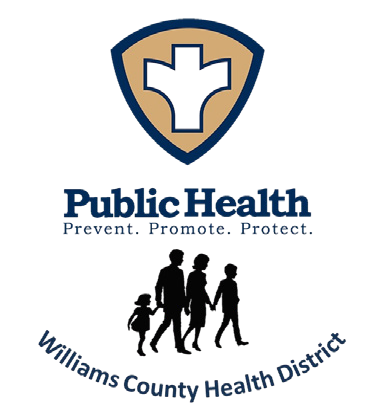
Animals and Insects
Zoonotic diseases, or zoonoses, are infectious diseases that can spread from animals to humans. In some cases, the animals will not show any symptoms of illness or disease but can still infect other animals or humans.
From the Ohio Department of Health:
Zoonotic diseases include:
- Those that can be transmitted directly from animals to humans (e.g., rabies)
- Diseases that can be acquired indirectly by humans through ingestion, inhalation or contact with infected animal products, soil, water, or other environmental surfaces that have been contaminated with animal waste or a dead animal (e.g., anthrax, leptospirosis)
- Vectorborne diseases that require a mosquito, tick or other arthropod to transmit disease from animals to humans (e.g., Rocky Mountain spotted fever, St. Louis encephalitis, West Nile virus)
The Ohio Department of Health provides current information on surveillance efforts in Ohio.
Rabies
From the Ohio Department of Health:
Rabies is a preventable viral disease of mammals most often transmitted through the bite of a rabid animal or, less commonly, when saliva from an infected animal gets into an open wound or onto a mucous membrane.
Rabies is almost always fatal once clinical symptoms appear; however, it is 100% preventable in humans through prompt and appropriate medical care. In addition to washing any bite wound with soap and water as soon as possible, animal bite victims should consult with their doctor and promptly report the incident to the local health department.
Ohio’s local health departments investigate approximately 20,000 animal bite and exposure incidents annually. Because of health department activities and medical treatment, human rabies is rare in the United States. Ohio’s last human rabies case was in 1970.
Mosquitoes
As the summer approaches, mosquitoes also make an appearance, especially between the months of June through October. The most common places they habitat and reproduce are locations with standing water; ponds/puddles, tall grass, wooded areas, etc. While their presence is almost inevitable, it is important to be aware of the pathogens that come with them. However, there are measures that can be taken to mitigate the reproduction of mosquitoes in your area found here.
Although there are strategies to be done to control mosquito breeding, it is important to limit your exposure to mosquito bites which may include:
- avoid being outdoors during peak mosquito biting periods (dawn and dusk)
- Wear light colored, long sleeved clothing that covers skin
- Use colognes and perfumes sparingly
- Keep your home secured and have no openings
- Apply insect repellent
- Follow label directions
For more information on West Nile Virus in Ohio, visit Ohio Department of Health: West Nile Virus
Ticks
From the Ohio Department of Health:
Diseases spread by ticks are an increasing concern in Ohio and are being reported to the Ohio Department of Health more frequently in the past decade, with Lyme disease and Rocky Mountain Spotted Fever (RMSF) being the most common. Other tickborne diseases such as anaplasmosis, babesiosis, and ehrlichiosis are also on the rise. Though rare, diseases such as tularemia, southern tick-associated rash illness (STARI), and Powassan virus may also be carried by Ohio ticks.
Ohio Department of Health Resource Page:
Rabies Information:
Mosquito Information:
Tick Information:
